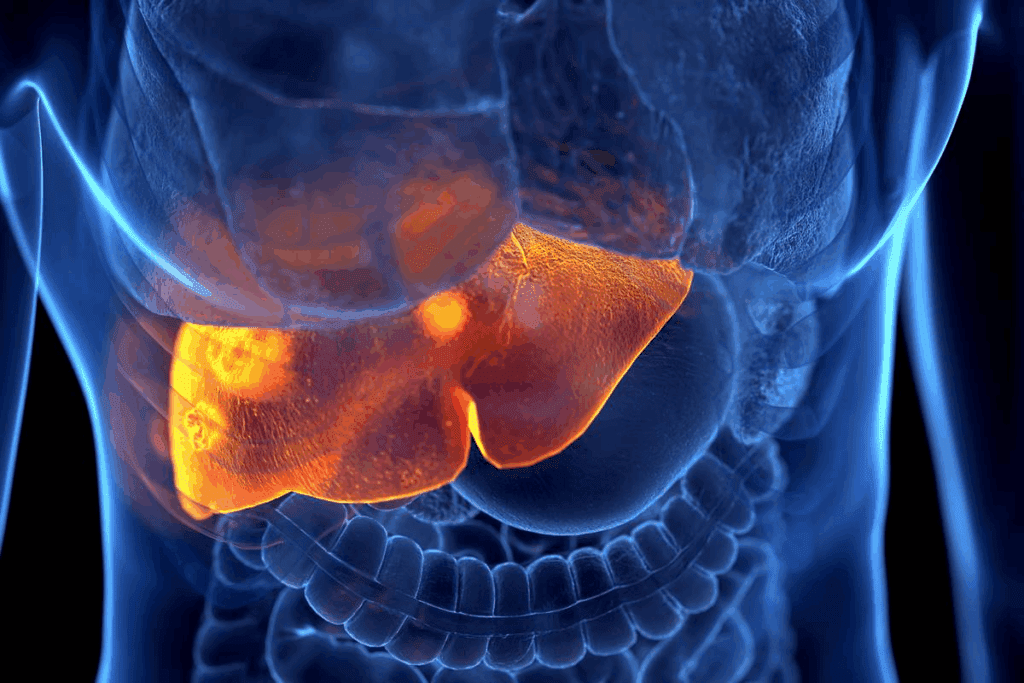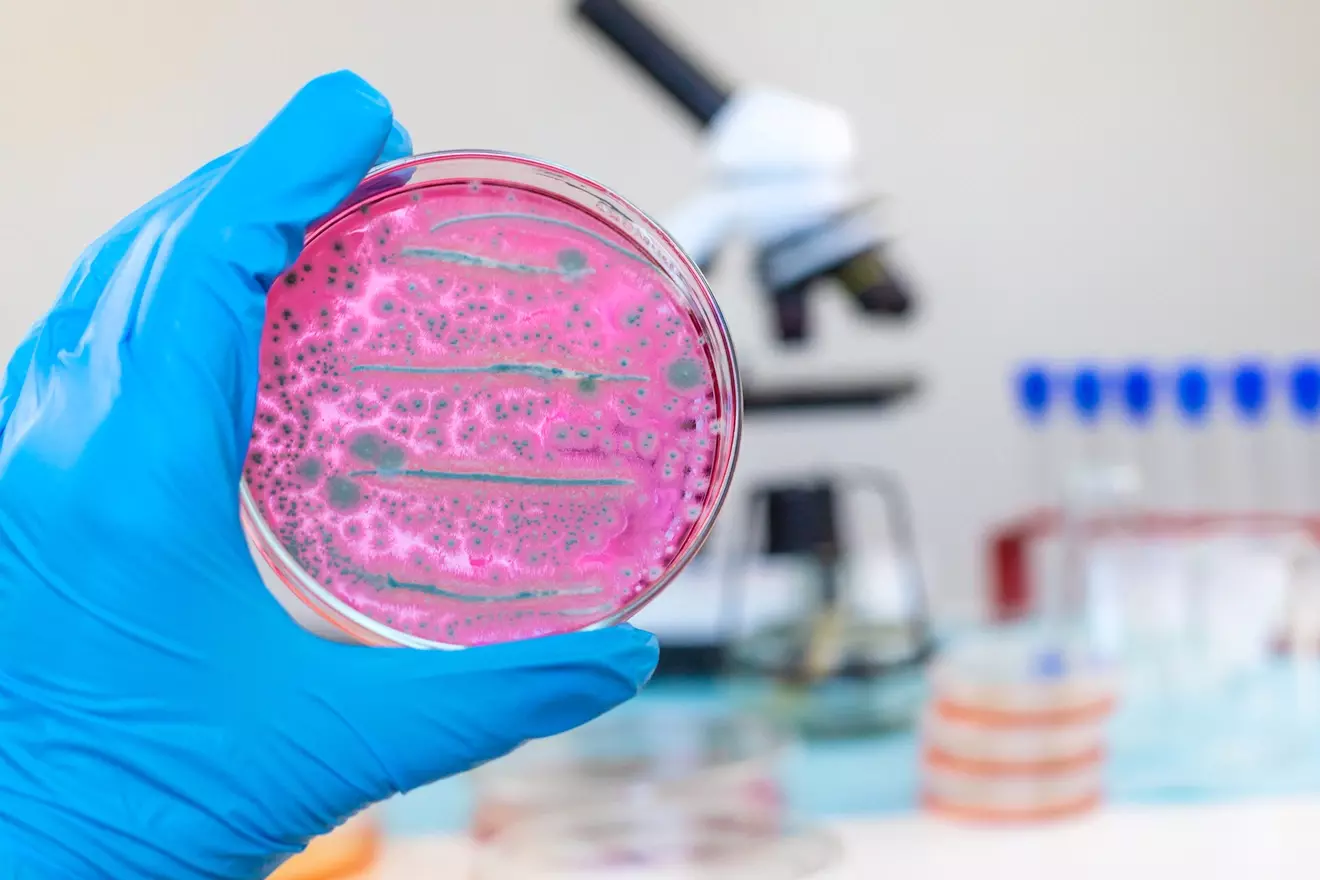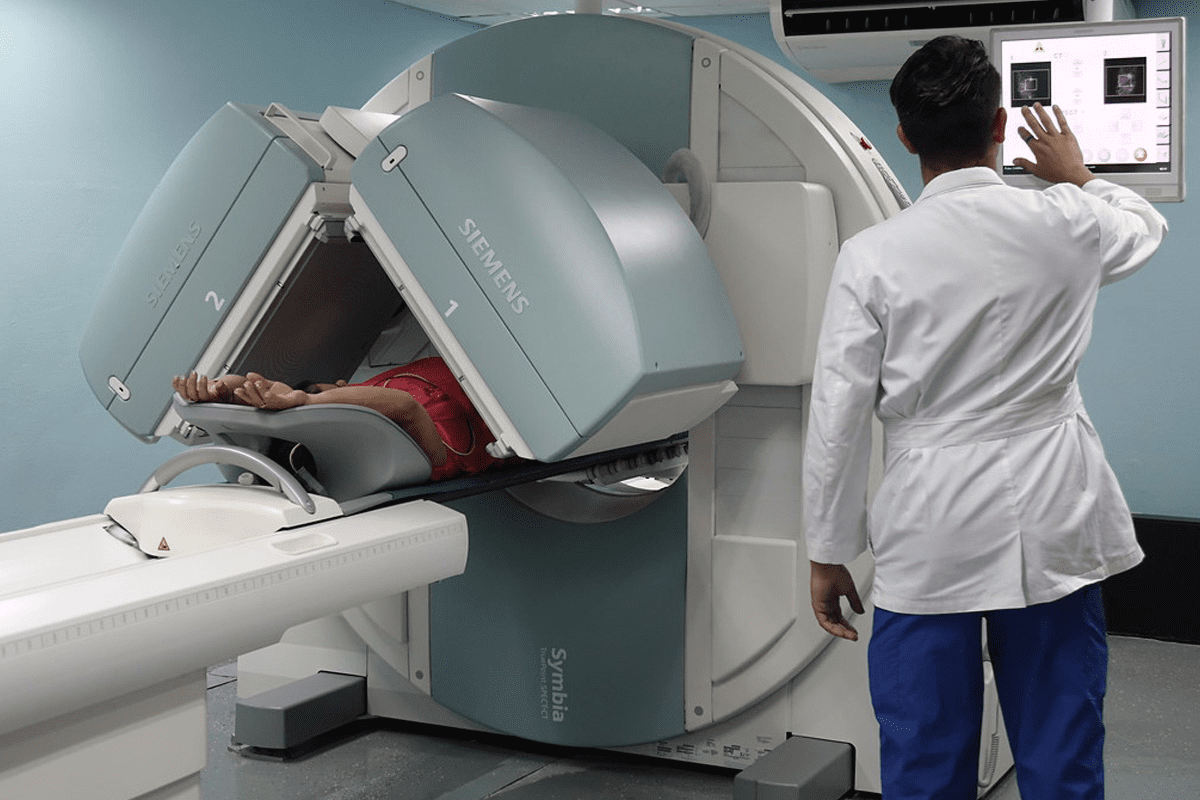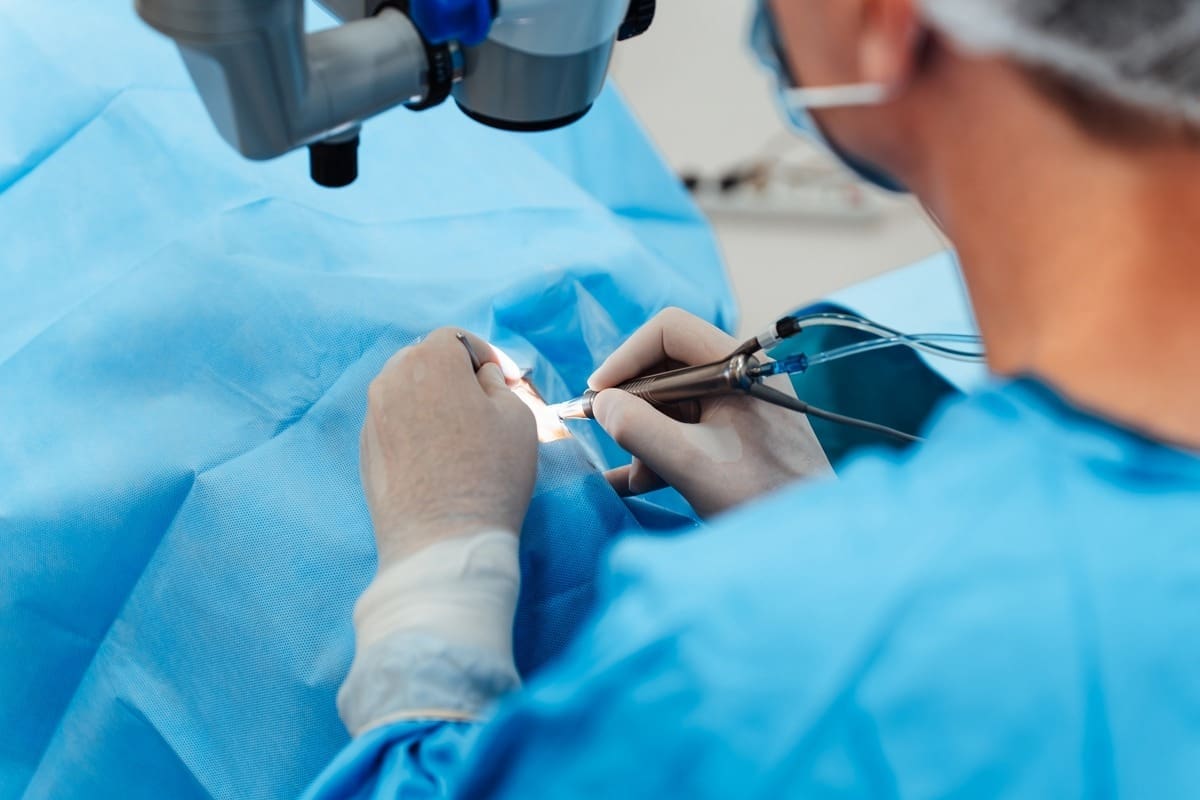Last Updated on November 26, 2025 by Bilal Hasdemir

A blocked bile duct can cause serious health problems. But, with today’s medical advancements and expert care, there’s hope for relief. At Liv Hospital, we focus on treatments that put patients first, using methods recognized worldwide.
We know how critical it is to tackle blockages quickly and well. Our team is committed to delivering world-class healthcare. We offer full support and guidance to patients from around the globe.
Dealing with a blocked bile duct means looking into treatments like liver drainage. Our specialists will walk you through your options. They’ll help pick the best treatment for you.
Key Takeaways
- Blocked bile ducts need quick medical help to avoid serious issues.
- Liv Hospital offers patient-centered, internationally recognized care for bile duct blockages.
- There are many treatment choices, including liver drainage procedures.
- Our team gives full support and advice to patients from abroad.
- Modern medical methods and skilled care can greatly improve treatment results.
The Bile Duct System and Its Importance

The bile duct system is vital for our digestive health. It’s important to know how to keep it healthy. The bile ducts carry bile from the liver and gallbladder to the small intestine. There, bile helps digest fats and absorb vitamins.
Anatomy and Function of Bile Ducts
The bile duct system’s anatomy is complex. It involves many ducts coming together to form the common bile duct. This duct joins the pancreatic duct at the ampulla of Vater, emptying into the small intestine. The function of the bile ducts is not just to carry bile. They also help control how much bile goes into the intestine.
Bile ducts have cells that help change and release bile. Keeping the bile duct system healthy is key to avoiding problems like blockages. These can cause serious health issues.
How Bile Supports Digestion and Health
Bile is key to digesting fats and vitamins. It breaks down fats into smaller pieces for enzymes to work on. Bile also helps remove waste from the body.
A healthy bile duct system is important for our health. If the bile ducts get blocked, it can cause jaundice and infections. Knowing how to keep the bile ducts clear is vital to avoid these problems.
In short, the bile duct system is essential for our digestive health. It helps us absorb nutrients and get rid of waste. Keeping the bile ducts healthy is important for our overall well-being.
What Causes Blocked Bile Ducts

Bile ducts can get blocked by gallstones, tumors, and inflammation. Knowing why they block is key to finding the right treatment.
Gallstones as Primary Culprits
Gallstones often block bthe ile ducts. These stones can move from the gallbladder to the ducts, causing a block. This is called choledocholithiasis.
Having gallstones in the ducts can cause a lot of pain, jaundice, and serious infections. It’s very important to treat it quickly.
Some things can make you more likely to get gallstones. These include:
- Being overweight
- Eating too much cholesterol
- Having a family history of gallstones
- Certain health conditions, like diabetes
Tumors and Strictures
Tumors, both good and bad, can block bile ducts. Pancreatic cancer and cholangiocarcinoma (bile duct cancer) are examples. Strictures, or narrowing, can also block the ducts.
Inflammatory Conditions and Other Causes
Inflammation, like primary sclerosing cholangitis, can cause scarring and narrowing. This leads to blockages. Other causes include infections and birth defects of the bile ducts.
Blocked bile ducts can also happen after surgery or because of nearby structures pressing on them.
Finding out why a bile duct is blocked is very important. Some blockages can be treated with medicine or endoscopy. But others might need bile duct blockage surgery to fix.
Symptoms That Indicate a Bile Duct Blockage
It’s important to know the signs of a blocked bile duct. This issue can cause mild to severe health problems. We’ll cover the main symptoms to help you know when to get medical help.
Jaundice and Visible Signs
Jaundice is a clear sign of a bile duct blockage. It makes the skin and eyes turn yellow. This happens because bilirubin builds up in the blood, not being excreted into bile.
Jaundice also causes dark urine and pale stools. This is because bilirubin goes into the blood and urine instead.
Other visible signs include itching all over. This is due to bile salts building up in the skin.
Pain Patterns and Locations
Pain is a key symptom of a blocked bile duct. It usually hurts in the upper right abdomen. The pain can feel dull or sharp.
- Pain may get worse after eating, like after fatty meals.
- Some people feel pain more at night or with fever and chills.
Digestive Symptoms and Systemic Effects
A blocked bile duct can cause digestive issues. You might feel nausea and vomiting. Bowel movements can change, too.
Some people experience fatigue and weight loss. This is because they can’t digest fats well. They also can’t absorb fat-soluble vitamins.
- Poor digestion can lead to malnutrition over time.
- In severe cases, a blockage can cause infections or sepsis if not treated.
Knowing these symptoms is key to treating a bile duct blockage. If you notice any, see a doctor. They can help figure out the best treatment, like how to unclog a blocked bile duct or a blocked bile duct operation.
How Doctors Diagnose Liver Duct Blockage ConditionsDiagnosing liver duct blockages is a detailed process. Doctors use several methods to find out if there’s a blockage and what’s causing it.
Blood Tests and Biomarkers
Blood tests are key in the early stages of diagnosing bile duct blockages. They show if the liver is working properly and if there are certain signs of a blockage. Important tests include:
- Liver function tests (LFTs) to check for liver damage
- Bilirubin levels to spot jaundice or bile duct blockage signs
- Alkaline phosphatase (ALP) and gamma-glutamyl transferase (GGT) for bile duct health
These tests give clues about a possible bile duct blockage. They help doctors decide what to do next.
Imaging Studies for Visualization
Imaging studies are vital for seeing the bile ducts and finding blockages. Common methods include:
- Ultrasound: A non-invasive test that spots bile duct swelling
- Computed Tomography (CT) scan: Gives detailed images of the abdomen, including the bile ducts
- Magnetic Resonance Cholangiopancreatography (MRCP): A special MRI for the bile and pancreatic ducts
Direct Visualization Techniques
Sometimes, doctors need to see the bile ducts directly to confirm a diagnosis and treat it. Endoscopic Retrograde Cholangiopancreatography (ERCP) lets doctors see the bile ducts and do interventions if needed.
ERCP uses an endoscope to go through the mouth and into the bile ducts. A contrast dye is used to see the ducts on X-ray images. This helps find blockages, stones, or other issues in the bile ducts.
By using blood tests, imaging, and direct visualization, doctors can accurately diagnose and treat blocked liver ducts. They address the root cause of the problem.
Draining Bile Duct: Procedures Overview
When a bile duct gets blocked, doctors often need to step in to fix it. A blocked bile duct can cause serious problems like jaundice, infection, and liver damage. Draining the bile duct is key to easing these symptoms and helping the patient feel better.
When Intervention Becomes Necessary
Doctors need to act when a bile duct blockage causes big symptoms or problems. They decide on a drainage procedure based on the blockage cause, symptom severity, and the patient’s health.
Indications for intervention include:
- Severe jaundice
- Recurring infections
- Significant pain
- Liver dysfunction
Doctors might suggest draining the bile duct if other treatments fail. The goal is to get bile flowing again, lessen symptoms, and avoid more issues.
Comparing Drainage Approaches
There are several ways to drain a blocked bile duct, each with its own benefits and drawbacks. The right procedure depends on the blockage location, cause, and the patient’s health.
The main drainage methods are:
- Percutaneous transhepatic biliary drainage (PTBD)
- Endoscopic retrograde cholangiopancreatography (ERCP) with stenting
- Surgical bypass procedures
Each method has its own use. For example, ERCP is often chosen for its less invasive nature and clear view of the blockage. PTBD is better for those who can’t have endoscopic procedures.
Choosing the right drainage procedure is very individualized, say medical experts. “The key to successful bile duct drainage is picking the best technique for the patient’s specific situation,” notes a leading gastroenterologist.
In summary, draining a blocked bile duct is a detailed process that needs careful thought. Knowing the different procedures and when to use them helps both patients and doctors make the best treatment choices.
Percutaneous Transhepatic Biliary Drainage Explained
The percutaneous transhepatic biliary drainage procedure is key in treating bile duct blockages. It’s great for patients who can’t have endoscopic procedures or surgery because of health issues.
Step-by-Step Procedure Process
Percutaneous transhepatic biliary drainage involves several key steps:
- Preparation: The patient is given local anesthesia and possibly sedation to ensure comfort during the procedure.
- Guidance: Using ultrasound or CT guidance, the physician identifies the obstructed bile duct.
- Access: A needle is inserted through the skin and into the liver to access the bile duct.
- Drainage: A catheter is placed to drain the bile, relieving the obstruction.
- Monitoring: The patient’s condition is closely monitored post-procedure for any complications.
This procedure is typically performed by an interventional radiologist in a specialized suite.
Advantages and Potential Drawbacks
Percutaneous transhepatic biliary drainage offers several advantages. It provides immediate relief from bile duct obstruction and can be done under local anesthesia. But there are risks like infection, bleeding, and bile leakage.
| Advantages | Potential Drawbacks |
| Immediate relief from obstruction | Risk of infection |
| Minimally invasive | Bleeding complications |
| Can be performed under local anesthesia | Bile leakage |
As with any medical procedure, the benefits and risks must be carefully weighed for each patient.
“Percutaneous transhepatic biliary drainage is a valuable tool in the management of bile duct obstruction, providing a balance between efficacy and risk.”
Expert Opinion
In conclusion, percutaneous transhepatic biliary drainage is a significant procedure for managing bile duct blockages. It provides relief and improves patient outcomes when used correctly.
Endoscopic Approaches to Bile Duct Drainage
Endoscopic methods have changed how we handle bile duct blockages. They offer a less invasive way compared to the old surgical methods. We use these techniques to find and fix bile duct obstructions well.
ERCP Technique and Applications
Endoscopic Retrograde Cholangiopancreatography (ERCP) is a complex procedure. It combines endoscopy and radiography to deal with bile and pancreatic duct issues. A flexible endoscope goes through the mouth, through the stomach, and into the small intestine to reach the bile ducts.
The ERCP technique uses a contrast agent in the bile ducts to see blockages or problems on X-rays. This helps find the exact problem, like a gallstone, tumor, or stricture.
Stent Placement and Stone Extraction Methods
After finding a blockage, stent placement is often used to open the bile duct. A stent, a small, mesh tube, is put in the bile duct. It keeps it open, letting bile flow into the intestine. This is key for patients with bile duct blockages from tumors or strictures.
Stone extraction is another important use of ERCP. Special tools are used to remove stones from the bile duct. This clears the blockage and prevents problems like jaundice and cholangitis.
These endoscopic methods, including ERCP, stent placement, and stone extraction, are big steps forward in treating bile duct problems. They give patients safer and more effective treatment options.
Surgical Solutions for Bile Duct Blockage Surgery
Surgical options are key for those with serious bile duct blockages. When simpler methods don’t work, surgery is needed to fix the bile flow.
Traditional Open Surgical Approaches
Open surgery means a big cut to reach the bile ducts. It’s used for tough cases where other methods have failed.
Advantages: It lets doctors see and work on the bile ducts directly, which is important for hard cases.
Disadvantages: It takes longer to recover, and there’s a bigger chance of problems.
| Aspect | Open Surgery | Minimally Invasive Surgery |
| Recovery Time | Longer | Shorter |
| Risk of Complications | Higher | Lower |
| Scarring | More significant | Minimal |
Laparoscopic and Minimally Invasive Options
Laparoscopic surgery uses small cuts for a camera and tools. It’s less invasive than open surgery and works for many bile duct surgeries.
Biliary Bypass Procedures
Biliary bypass surgery makes a new path for bile to flow. It’s done in different ways, based on the blockage’s location and type.
Types of Biliary Bypass:
- Choledochojejunostomy: A direct link between the bile duct and jejunum.
- Hepaticojejunostomy: Connecting the hepatic duct to the jejunum.
These are used when blockages are caused by tumors or when other methods can’t be used.
Living with a Bile Duct Drain or Liver Drain
Living with a bile duct drain or liver drain can be tough. But with the right help, patients can handle it well. It’s important to know how to care for the device, keep it clean, and watch out for problems.
Daily Care and Maintenance
Keeping the drain area clean and dry is key. Patients should gently wash the area with mild soap and water. Make sure to rinse well to get rid of soap.
Watching the drain’s output is also important. Patients or their caregivers should write down how much and what the drainage looks like every day. This helps doctors check if the drain is workingproperly andd how the patient is doing.
| Care Activity | Frequency | Notes |
| Cleaning the drain site | Daily | Use mild soap and water |
| Monitoring drain output | Daily | Record amount and characteristics |
| Checking for signs of infection | Daily | Look for redness, swelling, or fever |
Monitoring for Complications
Patients with these drains need to watch out for problems. Infection is a big risk. Look for redness, swelling, more pain, or fever at the drain site. If you see any of these, call your doctor right away.
“The key to managing a bile duct drain or liver drain lies in meticulous daily care and being aware of the signs of possible complications,” says a leading gastroenterologist.
Another problem is when the drain gets blocked. Watch for changes in the drain’s output or jaundice signs like yellow skin or eyes. Knowing how to unclog bile ducts or deal with a blocked liver drain is key to keeping the device working and the patient healthy.
Seeing your doctor regularly is important to keep the drain working well and solve any problems fast. Also, know how to manage your drain when you’re traveling or doing daily things to keep care going smoothly.
Potential Complications and Risk Management
Bile duct drainage is lifesaving but comes with risks. Understanding these risks and how to manage them is key.
Infection and Inflammation Concerns
Infections and inflammation are big worries after bile duct drainage. These can happen for many reasons, like bacteria during the procedure or blockages.
- Signs of Infection: Watch for fever, chills, and pain at the drainage site.
- Preventive Measures: Antibiotics might be given to lower infection risk.
- Management: Infections are treated with antibiotics. Severe cases might need more drainage or system changes.
Mechanical Issues and How to Address Them
Mechanical problems can also happen, like blockages or catheter dislodgement. Keeping an eye on things and regular care can help avoid these.
- Blockages: Sludge or debris can cause blockages. Flushing the catheter often can help.
- Dislodgement: If the catheter comes out, get medical help right away to avoid big problems.
- Catheter Care: Teach patients and caregivers how to take care of the catheter to lower mechanical risks.
Handling complications from blocked bile duct causes and liver drainage or bile duct blockage surgery requires a full plan. This includes educating patients, regular checks, and quick action when problems pop up.
Advanced Techniques in Liver Drainage Procedure
Liv Hospital is leading the way in liver drainage procedures. We use the latest medical technology and techniques. This ensures the highest quality treatment for our patients.
Innovative Technologies for the Drainage of the Bile Duct
Innovative technologies have greatly improved liver drainage. Percutaneous transhepatic biliary drainage and endoscopic retrograde cholangiopancreatography (ERCP) with stent placement are key. They help manage bile duct blockages effectively.
Some important technologies include:
- High-resolution imaging for accurate diagnosis
- Advanced stent designs for better drainage
- Minimally invasive methods to shorten recovery time
Specialized Approaches at Leading Institutions
Liv Hospital uses specialized approaches for liver drainage. We tailor care to each patient’s needs. Our team works together to create personalized treatment plans.
| Procedure | Benefits | Indications |
| Percutaneous Transhepatic Biliary Drainage | Effective for immediate relief of bile duct obstruction | Severe jaundice, acute cholangitis |
| ERCP with Stent Placement | Minimally invasive, allows for direct visualization and intervention | Bile duct stones, strictures, tumors |
| Surgical Biliary Bypass | Long-term solution for certain conditions | Chronic bile duct obstruction, failed endoscopic or percutaneous interventions |
By combining innovative technologies with specialized approaches, Liv Hospital offers top-notch care. Our dedication to medical advancements ensures the best outcomes for our patients.
Conclusion: Managing and Preventing Bile Duct Issues
Managing and preventing bile duct blockages is key to good digestive health. We’ve looked at the causes, symptoms, and treatments for blocked bile ducts. This includes the role of proper drainage and the different procedures available.
At Liv Hospital, we focus on giving top-notch care to international patients. Our team is ready to help with advanced medical treatments. We aim to ensure patients get the best care for bile duct problems, including treatment and addressing liver duct blockages.
Knowing the risks and taking action can help avoid bile duct issues. A healthy lifestyle, being aware of symptoms, and seeking help quickly are important. This way, patients can get the best treatment for managing bile duct problems.
FAQ
What are the common causes of blocked bile ducts?
Blocked bile ducts can happen for many reasons. Gallstones, tumors, strictures, and inflammation are common causes. If not treated, these blockages can cause serious health problems.
How is a blocked bile duct diagnosed?
Doctors use several methods to diagnose blocked bile ducts. Blood tests and imaging studies, like ultrasound and CT scan, are used. ERCP is also used to see the blockage directly.
What is percutaneous transhepatic biliary drainage?
This procedure involves putting a drain through the skin into the liver. It’s used when other methods can’t relieve the blockage.
How does ERCP help in managing bile duct blockages?
ERCP is a way to diagnose and treat blockages. A flexible tube is passed through the mouth to the bile duct. It allows for stent placement and stone removal.
What are the symptoms of a bile duct blockage?
Symptoms include jaundice, abdominal pain, dark urine, pale stools, and itching. The severity and cause of the blockage determine the symptoms.
Can a blocked bile duct be treated without surgery?
Yes, some blocked bile ducts can be treated without surgery. ERCP with stenting or percutaneous transhepatic biliary drainage are options.
What is involved in the care of a bile duct drain?
Caring for a bile duct drain means keeping the site clean. Watch for signs of infection or blockage. Follow healthcare instructions to ensure proper function and avoid complications.
Are there any risks associated with bile duct drainage procedures?
Bile duct drainage procedures carry risks like infection, bleeding, and mechanical issues. Proper care and follow-up can reduce these risks.
How do advanced techniques improve liver drainage procedures?
Advanced techniques and technologies offer better outcomes. They provide precise and less invasive treatments. This reduces recovery times and improves patient comfort.
What are the benefits of seeking treatment at a specialized institution for bile duct issues?
Specialized institutions like Liv Hospital offer top-notch care. They have cutting-edge technology and experienced professionals. This ensures patients get the best treatment for their condition.
References
- Camacho, J. C.et al. (2021). Treatment of malignant bile duct obstruction. World Journal of Gastroenterology, 27(29), 4836-4851. Retrieved from https://pmc.ncbi.nlm.nih.gov/articles/PMC8354720/






